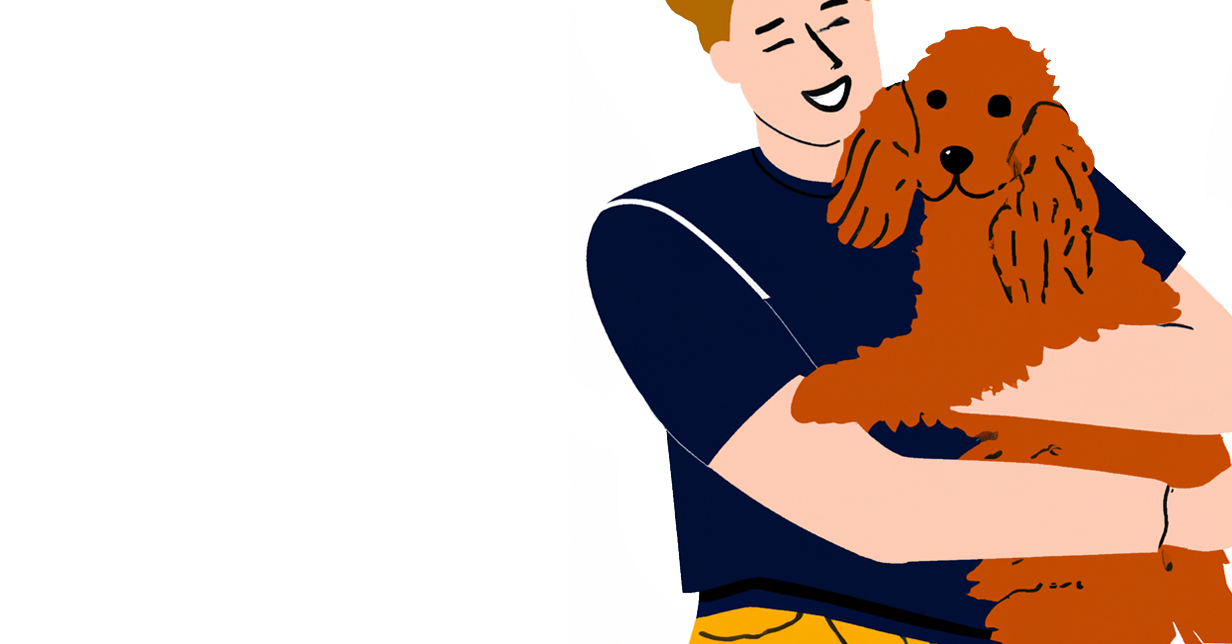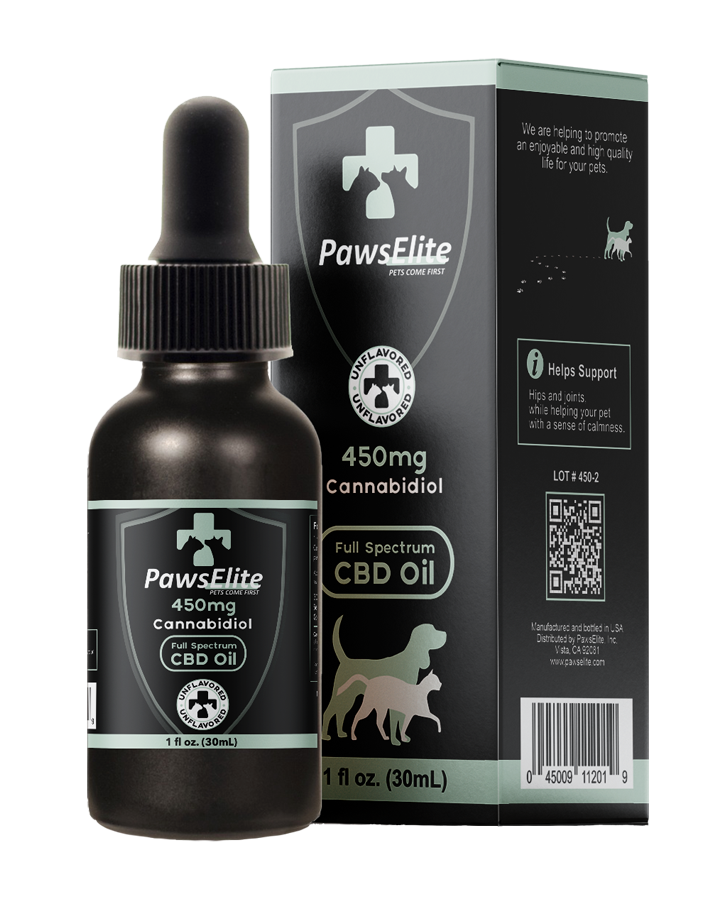
Can Dogs Get Hemorrhoids?
Share
Just like people, dogs can experience anus and rectum issues. Your dog may be seen straining when they squat to urinate or scooting (dragging their bottom) on the carpet. Hemorrhoids may come to mind immediately because they are a prevalent condition in people.
Canine hemorrhoids, though? Or is there another issue under your dog's tail? What to check for and what to do if your dog has back problems are listed below.
Can Dogs Get Hemorrhoids?
Hemorrhoids in people are enlarged and inflamed veins in the lower rectum and anus. They can appear inside the rectum or surrounding the anus, similar to varicose veins. They are brought on by circumstances like persistent constipation, which put additional strain on the veins in that location. People with hemorrhoids may experience itchiness, discomfort, or bloody stools.
Dogs don't have hemorrhoids, says Dr. Jerry Klein, Chief Veterinary Officer for the American Kennel Club. Dogs do not experience increased pressure on the corresponding veins, which explains this. He claims that technically speaking, dogs do not get hemorrhoids because their bodies and digestive systems are horizontal as opposed to vertical, which relieves strain on the rectum and anus blood vessels.
Differences Between Human and Dog Hemorrhoids
While humans and dogs both can suffer from rear-end issues, there are significant differences in how hemorrhoids affect each species. In humans, hemorrhoids are commonly caused by pressure on the veins in the lower rectum and anus due to factors like straining, a vertical gastrointestinal system, or a sedentary lifestyle. This leads to internal or external hemorrhoids, which can cause discomfort, bleeding, and require treatments like rubber band ligation.
In contrast, dogs have a horizontal gastrointestinal system, which naturally reduces pressure on the blood vessels in the rectum and anus, making hemorrhoids almost nonexistent. Instead, dogs are more prone to anal sac disorders, bleeding anus issues, and other intestinal problems. While dogs may not experience hemorrhoids like humans, their anal glands can become infected or impacted, leading to symptoms that mimic hemorrhoids, such as swelling or discomfort. Tumors and intestinal diseases are other potential issues that could lead to bleeding or other symptoms similar to hemorrhoids in dogs.
Rear End Problems Dogs May Have
What may be wrong with your pet's butt if dog hemorrhoids aren't the issue? There are several potential problems:
- Anal or rectal polyps. These little enlargements of additional tissue are uncommon and typically benign (non-cancerous); nonetheless, the bigger the polyp, the greater the likelihood that it may develop into cancer.
- Anal or rectal masses These tumors may be malignant or benign (cancerous). Surgery is the only option for treatment, and it will be most successful if the mass hasn't already migrated to other areas of the dog's body.
- Fistulas in the abdomen. These persistent sores have an unpleasant odor and are brought on by a tunnel-like skin development between the anus' interior and its surrounding skin. Dogs older than seven are more vulnerable. German Shepherd Dogs are most commonly affected by this illness.
- An internal hernia. This is a hernia (when an internal organ pushes through a weak spot in muscle or tissue) close to the anus, and you may notice a bulge below and to the side of it. Some breeds are more prone to it than others, including Boston Terriers, Boxers, Dachshunds, and Pekingese.
- Protruding rectus. Part of the rectum protrudes from the anus in this uncommon disease. Young dogs that frequently have severe diarrhea or must struggle to defecate are more likely to get it.
Causes of Hemorrhoid-like Symptoms in Dogs
Although dogs do not get hemorrhoids, there are several factors that may lead to hemorrhoid-like symptoms in dogs. Genetics, age, obesity, and dietary issues are just a few of the potential causes. Dogs may experience issues such as age-related loss of flexibility, poor diet, dehydration, diarrhea, or digestive system strain, all of which can lead to discomfort or pressure around the rectal area. Certain breeds may also be more susceptible due to their genetic makeup, leading to a higher risk of experiencing blood vessel expansion or a decrease in muscle tone. Conditions like intestinal disease or obesity can further exacerbate these symptoms, increasing rectal pressure and discomfort.
Anal Gland Issues
The anal glands in dogs' rear ends are the most often seen problem. Similar to the smell glands in skunks, these two oval-shaped sacs are located one on each side of a dog's anus. The glands release a liquid that smells strongly like fish. Since dogs are unable to spray their anal gland fluid, it is often squeezed out when they defecate, leaving a distinct fragrance mark on the stool. Anal glands can also unintentionally discharge in fearful or agitated dogs.
Many dogs, especially those of the huge and enormous breeds, never experience anal gland issues. However, certain dogs, especially small breeds, might have impacted anal glands, a condition in which the duct from the anus to the gland gets blocked. Additionally, the glands are susceptible to infection, abscesses, and malignancy.
The inability of the dog to squeeze out the sacs during defecating frequently results in anal gland problems. This may be caused by persistently soft stools or by overweight dogs' weak muscular tone. Anal sac issues can also be exacerbated by dermatitis, dietary fiber deficiencies, or allergies.
Some dogs require their anal glands to be physically drained in order to alleviate the fluid accumulation. However, without prior guidance from their veterinarian, owners shouldn't do this on their own. According to Dr. Klein, "A veterinarian can demonstrate to an owner how to properly communicate them. However, if done incorrectly or if the gland is blocked, more harm than benefit may result.
Prevention of Hemorrhoid-like Issues
Although dogs don’t experience hemorrhoids, they can develop hemorrhoid-like issues that cause discomfort. Preventive measures can help reduce the likelihood of these problems. Here are some key tips to keep your dog healthy:
- Maintain a balanced diet: Ensure your dog’s meal plan has a high nutritional value, promoting overall health and digestion.
- Include dietary fiber: Fiber supplements can aid in regular bowel movements and reduce strain during defecation.
- Ensure proper hydration: Make sure your dog has access to plenty of water, which supports digestion and prevents constipation.
- Avoid overly dried foods: Opt for foods with appropriate moisture content to support digestive health.
- Maintain a healthy weight: Keep your dog at an optimal weight to prevent unnecessary strain on their digestive system.
- Schedule regular vet check-ups: Early detection of issues such as intestinal diseases, cancer, or anal gland problems is crucial for prevention and treatment.
By following these guidelines, you can help your dog avoid discomfort and potential health problems in the future.
Symptoms of Hemorrhoid-like Issues in Dogs
While dogs do not get hemorrhoids, they can develop symptoms that may mimic hemorrhoid-related discomfort. Recognizing these signs early is crucial for addressing potential underlying issues like anal gland problems or other rear-end complications. Key symptoms to watch for include:
- Excessive licking: Persistent licking of the anal area can indicate discomfort or irritation.
- Scooting: If your dog drags its bottom on the ground, it may be trying to relieve pressure or itching around the anus, which can be a sign of swollen anal glands or other issues.
- Chronic constipation: Straining during bowel movements, or signs of discomfort when trying to defecate, could signal digestive strain or anal discomfort.
- Pain during bowel movements: Dogs may show visible signs of pain or hesitation when attempting to relieve themselves.
- Swollen anal glands: Inflammation or swelling around the anal area could suggest an anal gland problem or infection.
- Bloody stool: The presence of blood in your dog’s stool, especially if accompanied by red or dark purple patches around the anus, can be a sign of more serious issues such as anal gland infection or even a prolapsed rectum.
- Small growths: Any visible growths near the anal area should be examined, as they may be polyps or masses requiring medical attention.
- Prolapsed rectum: In more severe cases, a portion of the rectum may protrude from the anus, which often requires immediate veterinary care.
If your dog exhibits any of these symptoms, it’s essential to consult with a veterinarian to identify the cause and determine the best course of action. Early intervention can prevent further complications and provide relief for your dog.
Treatment Options for Hemorrhoid-like Issues in Dogs
If your dog is experiencing hemorrhoid-like symptoms, there are several treatment options to help alleviate their discomfort. These treatments can range from simple at-home remedies to veterinary interventions, depending on the severity of the issue. Here are some strategies to consider:
- Veterinary intervention: If your dog has severe or persistent symptoms, such as swollen anal glands, polyps, or a prolapsed rectum, it’s important to seek a veterinarian's guidance. They may recommend expressing the anal glands or surgical options for more serious conditions.
- Dietary changes: Increasing your dog’s fiber intake through food or supplements can help regulate bowel movements and reduce strain during defecation, minimizing symptoms of discomfort or constipation.
- Warm compresses: Applying a warm compress to the affected area can soothe irritated tissues and promote healing. This can be particularly helpful for minor swelling or inflammation around the anus.
- Topical creams or ointments: Certain creams, such as witch hazel, can be applied to soothe irritation. Always consult your vet before using any over-the-counter hemorrhoid ointments.
- Stool softeners: In cases of chronic constipation, a vet may prescribe stool softeners to ease bowel movements and reduce strain.
- Protective collar: If your dog is excessively licking or scooting, using a protective collar can prevent further irritation while the underlying issue is being treated.
- CBD products: Paws Elite’s Rapid Relief CBD Treats can provide anti-inflammatory and calming effects, which may help reduce discomfort related to rear-end issues. CBD has been known to support the body’s natural healing process, promote calmness, and relieve minor pain or inflammation. This natural approach can complement other treatments, providing additional relief for your dog.
Early detection and treatment are key to preventing complications and helping your dog feel more comfortable. Whether it’s making dietary adjustments or seeking veterinary care, there are multiple ways to manage these symptoms and improve your dog’s quality of life.
Related Article:







